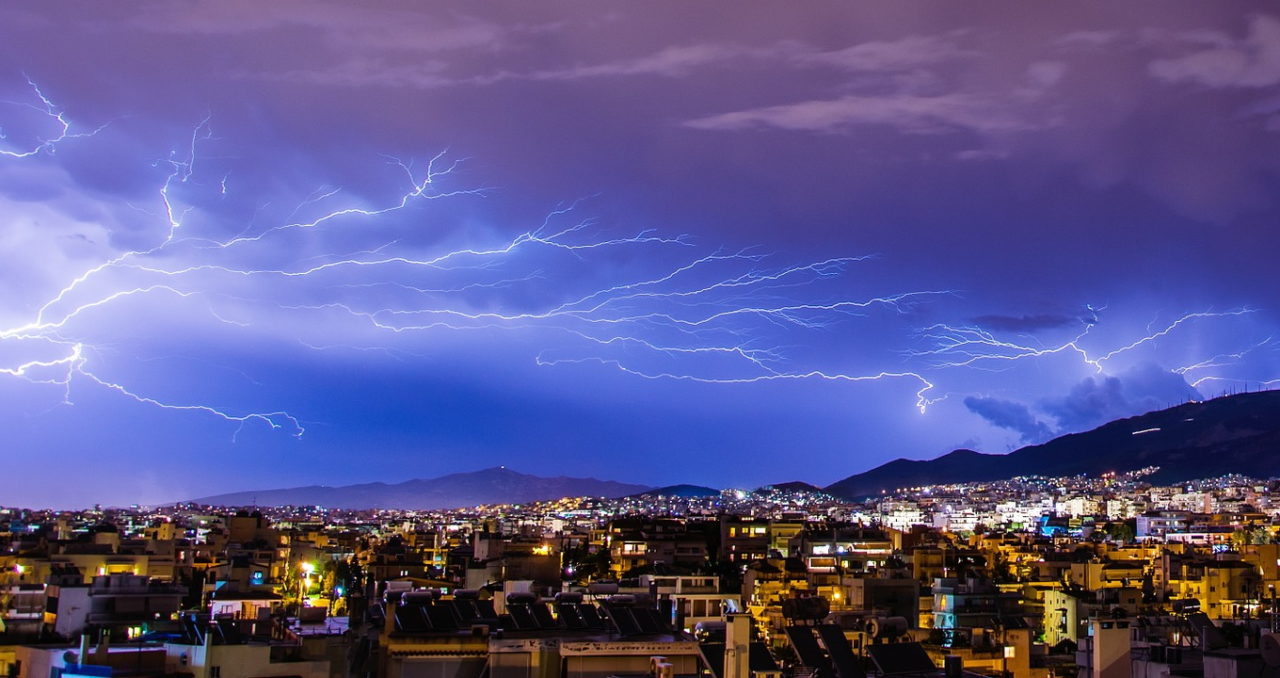Floods in Kentucky and wildfires in California are the kinds of disasters companies of all sorts are trying to address with AI.
Tom Rikert, co-founder and CEO of San Francisco-based startup Masterful AI, is one of many experts helping them manage catastrophe risk.
In the U.S. alone, the National Association of Insurance Commissioners estimates that natural disasters cost $232 billion in 2019. In the face of such costs, regulators worldwide are pressing banks and corporations to be proactive.
“Institutions are expected to understand the impact of climate-related and environmental risks … in order to be able to make informed strategic and business decisions,” Europe’s central bank said in guidelines published in late 2020.
How AI Turns Data Into Insights
The good news is companies can access petabytes of geospatial images from daily satellite and drone feeds to detect and assess these risks.
“Humans can’t review all that data, so they need computer vision to find the patterns,” said Rikert. “That’s why AI’s now essential for managing catastrophe risk.”
Masterful AI uses semi-supervised machine learning, so companies only need to manually label a small fraction of the images they want to use to train AI models. It also supplies software to automate the job of quickly training models that sift through data for actionable insights.
More Flexible, Accurate Models
An analytics company recently used Masterful AI’s tools to detect and classify damaged or rusted transformers that could spark a wildfire, critical insights for utilities.
The software reduced error rates in AI models by over half and cut by two-thirds the time to build new models. Because Masterful can efficiently tap large volumes of unlabeled data for training, it also helped models detect more kinds of component defects across a wider range of background terrains.
“That’s a very high ROI for this field,” said Rikert, who earned a master’s degree from MIT in machine learning and an MBA from Harvard.
Growing Demand and Domains
The startup has worked with several customers and analysis firms that evaluate disasters, pollution and land-use plans. For example, it helped an insurance company improve damage assessments after disasters like hurricanes and hailstorms.
“We see a lot of demand from people who have data and models they’re trying to make more accurate and apply to more domains,” Rikert said.
Masterful AI builds and tests its models on PCs using a mix of NVIDIA GPUs, then runs its largest benchmarks on NVIDIA A100 Tensor Core GPUs in the cloud. Likewise, its customers use the tools locally and in the cloud.
From Laptops to the Cloud
“NVIDIA AI is very portable, so it’s easy to go from local development to a cloud deployment — that’s not the case for some platforms,” Rikert said.
Masterful AI also helps customers maximize their use of the memory packed in NVIDIA GPUs to accelerate training time.
“Without NVIDIA GPUs, we would not be able to accomplish our work,” he said. “It’s not feasible to train our models on CPUs, and we found NVIDIA GPUs have the best combination of operator support, performance and price compared to other accelerators.”
Synthetic Data Fills Gaps
Masterful AI is a member of NVIDIA Inception, a free, global program that helps startups access new technologies, expertise and investors. Thanks to Inception, Rikert’s team aims to test Omniverse Replicator to generate synthetic data that could further improve AI training.
Synthetic data is increasingly used to augment real-world datasets. It can improve AI performance on edge cases and situations where users lack real-world data.
“We see opportunities to improve AI model quality by helping optimize the mix of synthetic, labeled and unlabeled data customers use,” he said.
Broad Ecosystem for Risk Modeling
NVIDIA supports catastrophe-risk products from established software vendors and dozens of startups that are also members of Inception.
For example, Riskthinking.AI, in Toronto, uses probability models, augmented by AI, to create estimates of the financial impact of climate change. In addition, Heavy.ai in San Francisco provides GPU-accelerated analytics and visualization tools to help identify opportunities and risks hidden in massive geospatial and time-series datasets.
Lockheed Martin uses NVIDIA AI to help U.S. agencies fight wildfires. The UN Satellite Centre works with NVIDIA to manage climate risks and train data scientists on how to respond to floods.
Global solution integrators including Accenture, Deloitte and Ernst & Young also deliver NVIDIA-accelerated catastrophe risk products.
It’s a broad ecosystem fighting a growing set of disasters exacerbated by climate change.
“Catastrophes are unfortunately becoming more prevalent, so we’re using our experience working with customers and partners to help others get insights faster by automating their model development,” said Rikert.
Learn more about NVIDIA’s accelerated computing platform for financial services.
